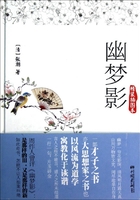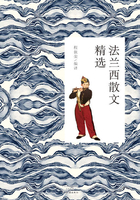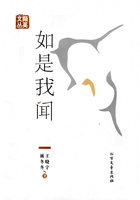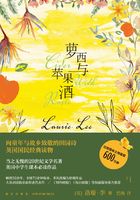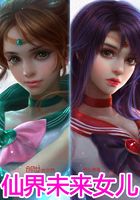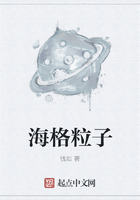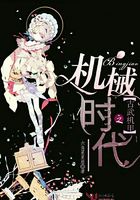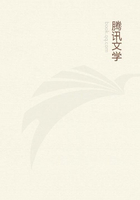Animal Studies and Ecological HumanismAnimal Studies and Ecological Humanism
The present study, therefore, is an attempt to explore the possible signifcance of animals in Vonnegut's fction, in particular, their relevance and contribution to Vonnegut's unique expression of humanism。 The theory of animal studies offers useful theoretical perspectives and approaches for the study, whereas the concept of ecological humanism works well as a resolution to the Vonnegutian puzzle of attacking and advocating humanism at the same time。The roles of animals link the two up。
As animal studies and ecological humanism are both emerging felds of studies, a relatively detailed introduction to each is necessary。 But let's begin with a general browse of the animal gallery in the Vonnegut world。
A。 Thematic Matter:Animals in the Vonnegut World
At first thought, Vonnegut seems to have little to do with animals-he is so predominantly concerned with the humankind, with their present condition and future possibilities。 He once said that the motivation for him to write is to“catch people before they become generals and Senators and Presidents, and poison their minds with humanity”(CKV 5)。Animals are so inconspicuous in contrast to this overwhelming theme that it is very likely to be ignored。
However, if only we consider his titles together, Vonnegut's fondness of animals becomes apparent:Cat's Cradle, Jailbird, Canary in a Cathouse, Welcome to the Monkey House, and Look at the Birdie。 There are also many animals in the titles of short stories:“Tom Edison's Shaggy Dog”,“Deer in the Works”,“All King's Horses”,and“The Petrifed Ants”。When it comes to his masterpiece, Slaughterhouse-Five, the presence of animals is alsounquestionable。After all, slaughterhouse is a place where livestock are killed。Whereas the title is often read as a metaphor for the brutal killing on the battlefeld, a familiar rhetoric in American literature since Stephen Crane, the fact that in the novel it refers to a real slaughterhouse demands more consideration。
Although many of the animals in these titles can be taken as metaphors or are simply colloquial expressions in which the animals have lost their realistic signification, the author's preference for the animal-related trope instead of a more common expression, for instance,“prisoner”for“jailbird”,or“look at the camera”instead of“look at the birdie”,seems to suggest more implications。 As the linguists tell us,“Metaphor is not just a matter of language”,there could be deep conceptual signifcance in them(Lakoff and Johnson 6)。
A large body of animals begins to surface in Vonnegut's fictional world when we keep our eyes open for them。 In Slaughterhouse-Five alone, there are over 30 kinds of animals, many of which appear more than once, such as the dog。In Cat's Cradle, there are 16 kinds of animals;in Hocus Pocus,40;in Slapstick,50.In Galapagos, animals are all over the pages, a fact easy to understand, considering the biological diversity that characterizes the islands。Roughly estimated, there are more than 200 kinds of animals in Vonnegut's works。Some are domestic, some wild;some are metaphors or imaginary, some real and living。Among these animals, Vonnegut's favorites are dogs, horses, cats, rats, fish, birds, monkeys, chimpanzees, giraffes, rhinoceros, aardvarks, ants, bugs, germs, and the imaginary unicorn。Sometimes he refers to the animals in the collective noun, such as mammals, dogs, birds, organisms, or simply“animals”。At other times, he uses specifc denominations, such as the German Shepherd or the Pekingese dog instead of simply dogs;sparrows, eagles, or warblers instead of birds;carp, tuna, perch, or pickerel instead of fsh;ticks, viruses, and germs, instead of microorganisms。
More importantly, although it is true that they seldom assume central positions in the works, many animal images are much more than merely a linguistic rhetoric employed in order to achieve vividness and forcefulness。 Some of them actually perform powerful roles and invite us to think that they carry messages that might contribute to the central theme。In The Sirens of Titan, for example, two characters determine to spend the rest of their lives with animals。One is Boaz, the selfsh and evil commander of the Martian army who plans to abduct Unk, the male protagonist, on the Martian invasion to Earth but is exiled to Mercury with Unk instead。After three years stranded on Mercury, Boaz comes to love the harmoniums, a thin, kite-like creature inhabiting the caves where he and Unk are imprisoned by the God-like Rumfoord。When Unk tells him that he has figured out the way to leave Mercury and return to Earth, Boaz declines to go with him。He has decided to stay on the planet, taking care of the harmoniums。The narrator tells us that thus Boaz turns from the Martian army commander who cannot help taking pleasure in torturing fellow soldiers into a“wise, decent, weeping, brown Hercules”(ST 212)。The other character is Chrono, the son of Unk and Beatrice on Mars。
A sullen and indifferent boy brought up on a desert-like planet, Chrono shows no interest in anything but a game of German batball。When he is exiled to the planet Titan with Unk and Beatrice, however, Chrono is fascinated with the enormous bluebirds there,“the most admirable creatures on Titan”。He eventually runs away to live with them。“He wore their feathers and sat on their eggs and shared their food and spoke their language”(ST 304)。Reading such plots in a novel that plays with the notions of fate and free will and deplores the human indifference to one another, we cannot help but wonder their relevance to the main themes and the roles they play。
In Slaughterhouse-Five, the narrator refers three times to the horses that draw the wagon on which Billy Pilgrim basks in the sun after the firebombing of Dresden and enjoys his happiest time in life。 In the lastand most detailed deion, the narrator focuses on a German couple lamenting on the pitiable conditions of the horses, their mouths bleeding and their hooves broken for lack of water and rest。The German couple's gentle criticism awakens Billy and arouses his sense of shame and pity。For the frst time in his unhappy life, Billy Pilgrim cries。It seems that the sight of the horses'sufferings stirs the soft part of his heart that all the atrocity he has undergone has hardened。One more example:at the very end of the novel, the narrator presents us a picture of Dresden turned into a lifeless moon by the frebombing。Amidst the chaos and deadly silence, we hear a bird asking,“Poo-tee-weet?”(SF 215)The episode turns out to be a signature of Vonnegut's art—in a couple of other novels, a bird is asking the same question。But what does he mean?What questions is the bird asking?Although it sounds nonsensical, the bird might be Vonnegut's persona inviting us to think over profound questions about humanity。
In Jailbird, a novel about the political corruption of government and the conflicts between labor and capital, the narrator gives a very detailed portrayal of a dog, a German shepherd, who persistently attacks automobiles passing by the country road。 The dog can hardly stand up on his hind legs as a result of being hit too often by the cars。In the same novel, the narrator gives tender deions of myriads of bright yellow little birds that dwell within the crown of the Chrysler Building。They fit within the spacious dome and“are capable of expressing heartbreak”(J 157)。In Cat's Cradle, after almost all living things are killed and everything liquid frozen as a consequence of the accidental spread of ice-nine, a mischievous invention of the professor who invented the atomic bomb, the ants are among the few survivors。“They did it by forming with their bodies tight balls around grains of ice-nine。They would generate enough heat at the center to kill half their number and produce one bead of dew。The dew was drinkable。The corpses were edible”(CC 186)。
In Hocus Pocus, the narrator repeated a seemingly minor and insignificantdetail three times:that people are eating lobsters boiled alive。Between the repetitions is sandwiched the central plot of how the narrator is dismissed from his post as a professor for no sound reason at all。More radically, the ending of Galapagos presents us a picture of the human future that is both hopeful and disturbing。After a million years, the human beings on the islands of Galapagos evolve/devolve into some kind of“fsherfolks”that have small brains, furry skins, and fipper-like hands, as well as the ability to remain underwater for long periods of time。These seal-like humans live peacefully in the watery environment and enjoy harmony with both nature and themselves。
These are just a few examples from Vonnegut's lively animal kingdom。 In almost every story Vonnegut tells, there is at least one leading animal image。Submerged as most of them are underneath the author's obsessive concern for humanity, these animals make their appearances from time to time, usually when they are the least expected。Like phantoms of mysterious potency, they lurk and roam in the Vonnegut world, surprising us to the recognition of their existence, but at the same time puzzling us with their enigmatic significance。Why are they there?What are they intended to suggest?How are they related to the central themes of the books in which they turn up?Are they pointing to some new directions in Vonnegut's art and philosophy, directions that Vonnegut scholars have long failed to notice?Or, if the animal images do bear some signifcance, are they merely instrumental as symbols and metaphors, or do they stand in their own right as living beings?
It is this enigmatic nature of these animal images that attracts me to carry out my research。 In this book, I will attempt to decode these images, trying to fgure out their connotation and signifcation, their roles in assisting the author to convey his predominant themes and at the same time asserting their own rights。In so doing, I hope to either strengthen the existing understanding of Vonnegut, but from a new perspective, or tounearth some neglected aspects in the spiritual and philosophical world of the late cultural icon。
B。 Animal Studies:Extending the Human Horizon
The emerging field of animal studies provides a vantage point and theoretical approaches for the investigation of Vonnegut's animals。 As a discipline in the humanities, animal studies arose in the Western countries in the 1970s and has been gathering force ever since。It springs from the premise that animals are both indispensable to the advancement of humanity and worthy of consideration in their own right。Emerging in the wake of the civil rights movement, women's liberation movement, countercultural movement, and the environmental movement, it partakes in the spirit of liberation and moves on to carry the aspirations of emancipation beyond the human sphere into the nonhuman world。
Animal studies focuses on a reexamination of the human-animal relationship。 By tracking down the historical transformation of the animal status in the human society and culture, with regards both to the real animals and the cultural representation of them, it interrogates the ethical, cultural, and political implications in the human treatment of animals。The ultimate goal is to bring people to the awareness of the significant roles animals play in our understanding of humanity, alert us to the cruelty and injustice in our treatment(and maltreatment)of animals, help us recognize animals'moral status as subjects of life, thus defend their rights and welfare and eventually construct a fair, mutual, harmonious relationship between animals and human beings。
1.The Philosophical History of the Animal
The discussion of the human-animal relationship has seen a long history in the Western philosophy。 As early as in ancient Greece, two contending camps began to take shape。One was championed by Aristotle(384—322 BC),believing in the natural hierarchy in the Great Chain of Being and man's supremacy over animals。They insisted that there was an insuperable line between humans and animals, regarding the capability of reason as the golden rule for the division。The other camp had Pythagoras as its progenitor。Philosophers in this camp emphasized the interrelatedness between humans and animals, holding that the difference between animals and humans was only in degree, not in kind。Many of them advocated vegetarianism。
The philosophical standpoint directly affected people's thought and practice。 For the Aristotelian school, it was only natural for human beings to make use of other animals that are believed to lack reason and thus inferior。Humans had no moral obligation for them。A great number of prominent thinkers were followers of this school of thought, including the Stoic philosophers of the 1st century and St。Augustine(354—430)and St。Thomas Aquinas(1225—1274)of the Middle Ages, but the most influential figure after Aristotle was Rene Descartes(1596—1650),the“father of modern science”and a founder of modern philosophy。Not only did he divide the world into mind and matter, he also propounded a mechanistic view that saw nature as a self-moving machine。Because animals were part of nature, and because they lacked“a thinking soul”,they were organic machines, nothing but“natural automata”。Therefore, people could be absolved“from the suspicion of crime when they eat or kill animals”(61,62)。。To a great extent, Descartes had rationalized and legitimized the human supremacy and dominance over other animals。
After him, Hamlet's dubious celebration of man as“the paragon of animals”became a factthat was taken for granted。Although Locke, Hume, and Kant rejected Descartes'dualistic division of mind and matter and protested his callous view that animals lacked perception and feelings, they all stopped short of including animals in the moral community。Their primary concern was still animals'lack of reasoning capability。The common understanding persisted that animals were resources for human use。During the Enlightenment movement, a two-way intellectual progress was ascertained:on the one hand, it established man's emancipation and supremacy, yet on the other, nonhuman animals had been degraded into the world of non-feeling objects。This human/animal dichotomy ultimately naturalized and encouraged unrestricted oppression and exploitation of animals as well as the natural world at large。
On the part of the Pythagorean school, the battle had been a tough one。 Although there were such prominent supporters as Plutarch, Seneca, Ovid, and St。Benedict, their plea for humane considerations for animals had been dimmed in the uproar for more anthropocentric projects。It was with Jeremy Bentham(1748—1832)that things began to change。A pioneering philosopher of Utilitarianism, Bentham made gestures of extending the egalitarian principles to the nonhuman species。To answer the century-long question,“what is the criterion for moral considerations?”he observed:
The day may come, when the rest of the animal creation may acquire those rights which never could have been withholden from them but by the hand of tyranny。 The French have already discovered that the blackness of the skin is no reason why a human being should be abandoned without redress to the caprice of a tormentor。It may come one day to be recognized, that the number of the legs, the villosity of the skin, or the termination of the os sacrum, are reasons equally insuffcient for abandoning a sensible being to the same fate。[……]The question is not, Can they reason?Nor Can they talk?But, Can they suffer?(9)
In this statement, Bentham made it explicit that all sentient beings deserved equal moral treatment and abuse based on species was unjust, in the same way as it was unjust in the cases of racial and sexual oppression。
Many Enlightenment humanitarians of the 18th century were supportive of Bentham's statement, such as Shaftesbury, Voltaire, Rousseau, John Lawrence(1753—1839),and Arthur Schopenhauer(1788—1860)。 However, the major breakthrough was not made until in the latter half of the 19th century, with the publication of Darwin's Origin of Species(1859)and The Descent of Man, and Selection in Relation to Sex(1871)。In the first book, Charles Darwin(1809—1882)put forward two major propositions:that all animals“descended from at most only four or five progenitors”,and that by workings of natural laws simple forms of life have evolved into life forms of elaborate construction and great diversity that are“dependent on each other in so complex a manner”(Origin of Species 364,368)。These propositions drastically shattered the orthodox Christian belief in the myth of creation and projected a biotic community of interdependence。
In The Descent of Man, he made an even more radical observation that man evolved from lower animals and the natural laws worked the same way in the human evolution as with other organisms。In other words, human beings are animals;we are close cousins of the chimpanzees。More importantly, Darwin refuted the century-long contention that animals were lacking reason and moral consciousness。He expounded that“there is no fundamental difference between man and the higher mammals in their mental faculties”and that animals very low in the scale of organisms have mental powers“much higher than might have been expected”(Descent of Man 86)。The relation between humans and other animals turned, in this way, from mastery to kinship。The“insuperable line”became merely a self-deluding illusion。
Darwinian theories had boosted the animal protection movement that took its inception in the 19th century, but it also lent force to social Darwinism, which propagated the naturalistic view of the human society and gave excuses to the ruthless oppression of the richer and stronger on the poorer and weaker, which, of course, is abuse of Darwin's theory。 It was not until the 1960s and 1970s when major liberation movements in the human sphere were in full swing that animals began to gain serious moral considerations。Peter Singer's publication of Animal Liberation in 1975 marked the beginning of a new era in the discussion of animals'moral status。Under its infuence, the once sporadic and loosely organized campaigns and protests against cruelty to animals grew into a sweeping humane movement—the animal liberation movement。From this cultural soil sprang animal studies。
2.Main Thoughts in Contemporary Animal Studies
Animal studies as a humanities discipline shares the same ethical foundations with African American studies, women's studies, Marxist studies, and environmental studies:the denunciation of oppression, domination, and exploitation of the weaker kind。 As Lawrence Finsen and Susan Finsen state in their“Extension Thesis”,those who are concerned about one exploited group will often extend that concern to other groups(qtd。in S。J。Armstrong 6)。A latecomer as it is, animal studies offers a locus where all disciplines of moral extension meet and converse。What makes animal studies radically different is that it has as its central concern not welfare of a particular group of the human community, but that of the nonhuman animals, a remarkable shift from inter-personal relation to inter-species relation。Aspiring to transcend the species boundary, animal studies launches the greatest challenges to human institutions among all intellectual endeavors to date。“[I]t poses fundamental challenges[……]to a model of subjectivity and experience drawn from the liberal justice tradition and its central concepts of rights, in which ethical standing and civic inclusion are predicated on rationality, autonomy, and agency”(Wolfe 2010:127)。If successful, its victory will be the greatest in the human history of combating difference-based biases。
As a highly interdisciplinary field, animal studies embraces a vast range of theories, perspectives, and practices, such as biology, anthropology, sociology, history, philosophy, ethics, psychology, and literary studies。 An“animal studies bibliography”offered by Michigan State University classifies the resources into thirteen substantive categories, and all possess a large body of existing research。
As my primary concern in this book is with the conceptual understanding of animals'roles in the human culture, both symbolically and realistically, I will mainly introduce two schools of studies, in my own categorizing:ethical studies of animals and critical studies of animals。 The frst group includes both the polemical arguments for the animal welfare and the philosophical examination of the moral status of animals in the human society。They are primarily concerned with the real, living animals and aimed at promoting changes in the patterns of thinking and behavior。The second group is more interested in the animals of the human mind。They make critical inquiry into the animal representation in the Western culture and literature。Although they are also ultimately concerned about the moral status of real animals and aim at conceptual changes, a conscious emphasis is placed on the symbolic and the representational。
Ethical Studies of Animals(Animal Ethics)
Contemporary animal ethics is concerned with issues about the animal moral status, animal welfare, animal interests and rights。 Scholars and activists investigate into the lives of animals in all conditions:animals for food, animals for research, wild animals, domestic animals, farm animals, animals as pets, zoo and aquarium animals, and animals in entertainment。Raising questions that demand ethical justification for meat eating, sport hunting, animal farming, animal confinement and captivity, etc。,they promote public awareness of the cruelty and injustice humans daily infict onto nonhuman animals and forcefully challenge the moral complacency we enjoy under the protective assumption of human supremacy and moral absolutism。As Peter Singer puts in the introduction to Animal Liberation, the ultimate goal of animal ethicists is to“[end]oppression and exploitation wherever they occur, and[to see]that the basic moral principle of equal consideration of interests is not arbitrarily restricted to members of our own species”(1990:ii)。

